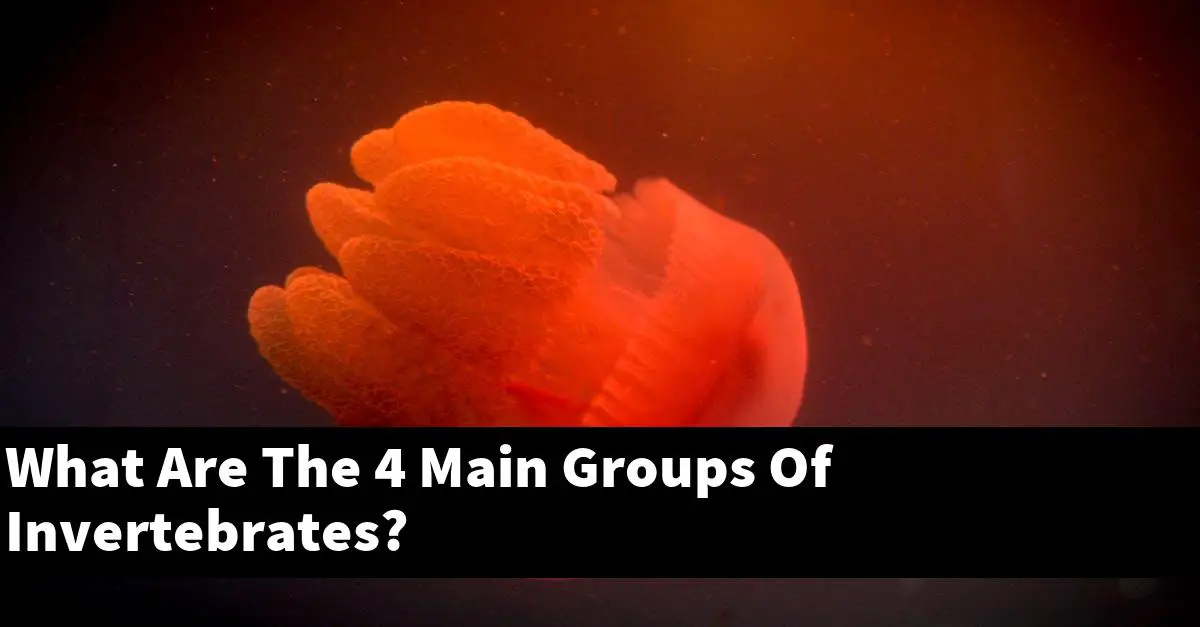Invertebrates are animals that do not have a backbone or spinal column. The four main groups of invertebrates are mollusks, arthropods, echinoderms, and chordates.
What are the main groups of invertebrates?
There are three main groups of invertebrates: Crustaceans, arthropods, and mollusks. Crustaceans are the most numerous group, comprising over a million species.
They include crabs, lobsters, and shrimp. Arthropods are second in number, with over a thousand thousand species.
Fluval Plant 3.0 LED Planted Aquarium Lighting, 32 Watts, 24-34 Inches
Boyd Enterprises CPGNnano5 Chemi-Pure Green Nano 5 Pack Aquarium Filtration
5% OffFzone 1.2 Gal Nano Rimless Auqarium Low Iron Fish Tank NovaClear Ultra-White Translucent Glass Verso Series Nano Shallow Pond Levitating Floating Air Aquarium(A20C-H12)
$29.99 (as of July 14, 2024 19:14 GMT +03:00 - More infoProduct prices and availability are accurate as of the date/time indicated and are subject to change. Any price and availability information displayed on [relevant Amazon Site(s), as applicable] at the time of purchase will apply to the purchase of this product.)They include insects, spiders, and centipedes. Mollusks are the smallest group, with only a few thousand species.
They include clams, squid, and octopuses.
What are the 5 characteristics of invertebrates?
Invertebrates are animals that lack a backbone. They are made up of cells that are separate from each other and are unable to move.
Invertebrates include everything from bacteria to bees to spiders. The five characteristics of invertebrates are that they have a fluid body, they have a single opening to the outside world, they have a nervous system, they have a central cavity, and they have a spine.
What are the 4 major characteristics of invertebrates?
The four major characteristics of invertebrates are:
-Invertebrates are animals that lack a backbone.
-They have a unique body plan that does not include a head and a spinal column.
-Invertebrates have a number of appendages, including a head and a set of antennae.
-Invertebrates are typically smaller than animals with a backbone.
What are the main invertebrates groups?
There are three main invertebrate groups: the arthropods, the mollusks, and the chordates. Arthropods include insects, spiders, and other small creatures that have an exoskeleton.
Mollusks include clams, oysters, and other creatures that have a soft body. Chordates include fish, amphibians, and other creatures that have a spinal cord.
How many types of invertebrate animals are there?
There are over 25,000 different types of invertebrate animals, which is more than any other phylum of animals. This diversity is due to the large number of different ways in which the body is organized, as well as the large number of different ways in which an animal can survive.
Invertebrates include animals like jellyfish, sea creatures, and worms.
What is the difference between invertebrates and multicellular organisms?
Multicellular organisms are composed of many cells that work together to carry out the organism’s function. Invertebrates are composed of one cell, called a somatic cell, that does not have a nucleus.
Somatic cells are the cells that make up the body of an invertebrate. Invertebrates are divided into two groups based on their cell structure: phylum Chordata and phylum Arthropoda.
Chordata is made up of fish, amphibians, reptiles, and mammals, while Arthropoda is made up of insects, arachnids, and crustaceans. The main difference between invertebrates and multicellular organisms is that invertebrates have one cell, while multicellular organisms have many cells.
What is the most common invertebrate group?
The most common invertebrate group is the arthropods. This group includes insects, spiders, and crustaceans.
What is an invertebrate?
An invertebrate is an organism that does not have a backbone. This includes things like worms, crustaceans, and insects.
How many types of invertebrate are there?
There are over 100,000 invertebrate species. This number is constantly growing as new invertebrates are discovered and classified.
Some common invertebrates include bacteria, fungi, invertebrate animals, and invertebrate plants.
Conclusion
Invertebrates are animals that do not have a backbone or spinal column. The four main groups of invertebrates are mollusks, arthropods, echinoderms, and chordates.
Mollusks include creatures such as snails, slugs, and octopuses. Arthropods include insects, spiders, and crabs.
Echinoderms include starfish and sea urchins. Chordates include animals such as frogs and snakes.




















